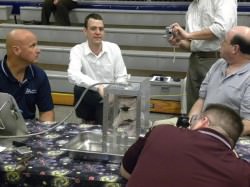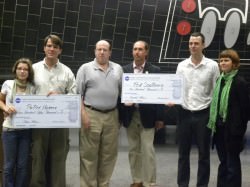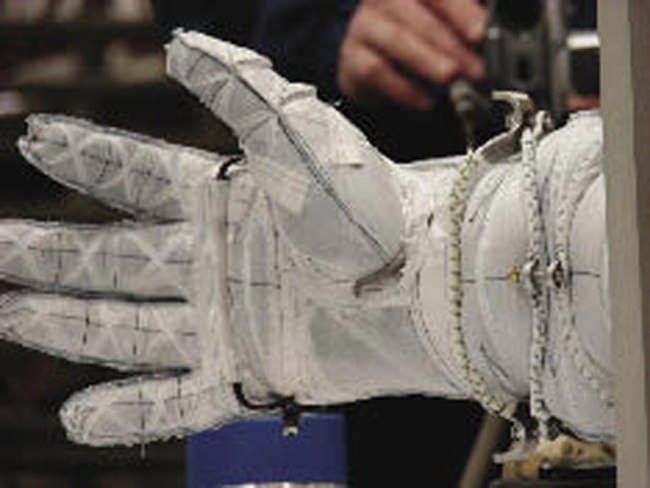NASA’s Astronaut Glove Centennial Challenge contest was held yesterday at the Astronaut Hall of Fame in Titusville, Florida, and two contestants walked away with a total of $350,000 in prize money for their improved designs of space suit gloves. Peter Homer of Southwest Harbor, Maine, won $250,000 for his glove, and Ted Southern of Brooklyn, New York won $100,000. Both contestants had participated in the 2007 event, and Peter Homer qualified for a prize last time.
Both of the gloves performed well in the tests. The rules of the design competition specified that each glove was to undergo a burst test, in which it was filled with air in a tank full of water until it burst. Homer’s glove – which is an updated version of the one he used to win the last competition – held out to 20psi before bursting. Southern’s glove made it to 17psi.
The gloves were also tested as to how fatiguing they were to use during thirty minutes of pinching, gripping, and other tests that involved manipulating small objects and finger-flexing. The judges also awarded Homer first place in this part of the competition, but both gloves beat an “in-house” glove in all of the tests, qualifying both for prizes.
As we reported earlier this week, this year’s competition involved the added complication of designing a thermal micrometeorite garment (TMG), the outside layer of the glove that protects the astronaut’s hand from damage. This is basically a complete glove that is ready for operation in space.
“This is the first year we are testing the full unpowered glove. Having the TMG will make the glove harder to use, and will make the tests more realistic. The TMG will be evaluated according to the rules and team
agreement as published,” said Alan Hayes, Volanz Aerospace Chairman and Chief Operations Officer. Volanz Spaceflight is a non-profit educational organization that ran the competition as an allied organization to the Centennial Challenges Program.
“Both competitors improved their designs significantly from 2007, but Ted’s progress was especially impressive,” Hayes said in a NASA press release.
The Astronaut Glove Challenge is one of NASA’s Centennial Challenges Program, which offer cash prizes to private companies or individuals for innovation in space-related fields. This is the third in a series that has wrapped up these past few months, the other two being the Space Elevator Games and Northrop Grumman Lunar Lander Challenge. A total of $3.65 million has been awarded this year alone.
Congratulations to the winners of the glove challenge, and all of those that participated in the events this year – it’s been a truly exciting time for space innovation!
Source: NASA, email exchange with Alan Hayes

